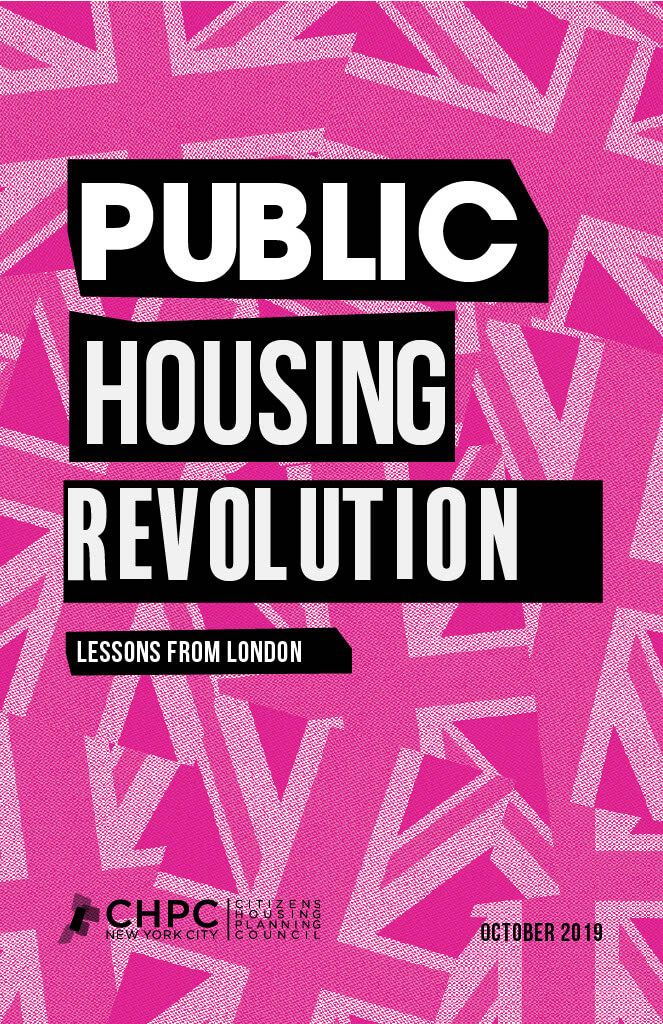NYC's RAD-PACT program offers a unique opportunity to test new ways to elevate the role of residents in comprehensive renovation projects and the new property management of their homes
After decades of crippling federal budget cutbacks, severely deferred maintenance, and growing capital needs, the New York City Housing Authority (NYCHA) is in crisis and housing conditions for tenants are intolerable. Some NYCHA developments are beginning to be transferred to public-private partnerships through the RAD-PACT program (Permanent Affordability Commitment Together), bringing new investment through the affordable housing industry and new property management. As a way to offer useful support and advice to the development of this program, in 2019, CHPC launched a research initiative studying the experience of the UK, which followed a similar approach of public/private conversions in the 1990s and 2000s.
In 2019, CHPC invited a group from London to share lessons from their experiences regenerating public housing over the last 40 years. CHPC hosted the
group at meetings with City Hall, City Council, and NYCHA tenant leaders, as well as at a public panel event. The visit provided an opportunity for New York City policymakers and NYCHA residents to hear about how the UK solved an even larger public housing crisis than the one NYCHA faces today.

Public Housing Revolution: Lessons from London, May 2019
View moreCHPC then published a study about the vast improvements made in Londons public housing conditions over the last three decades.
Public Housing Revolution: Lessons from London Report
KEY TAKEAWAYS
A critical component of the UK’s successful transformation was the elevation of residents in all decision-making around the “regeneration” of its public housing. Residents are a key source of knowledge about how their buildings operate, what improvements are needed, and made a major contribution towards planning how housing conditions can be improved. Having a solid, transparent partnership between residents, housing authorities, and developers meant that decisions were made that all parties were happy with. Resident-centering pushed the private developers to focus more on the public good, and held housing authorities accountable for ensuring that the renovation and new property management focused on the needs of the residents.
In the UK, public housing residents were given a menu of options to choose from to improve their homes, and made decisions in partnership with the development team and local housing authority. Residents selected developers and architects. Residents were treated as the architectural clients for their new homes, and given final vote on any rehabilitation or redevelopment plans. Residents were given a prominent role in the strategy, scrutiny, and shaping of property management.
The key lesson of this study was that resident decision-making must be a crucial element for the future of NYC public housing. Any plan to improve the function of NYCHA and transform the housing conditions of public housing tenants will require the support of its residents to succeed.
Participatory Property Management: A Toolkit from the UK
Following the initial study in London’s regeneration approach, CHPC followed up with a deep dive on the different ways that residents are centered in property management following a public/private conversion for public housing
The last few years has seen great success in the implementation of resident decision-making for public housing residents in the planning for the renovation, redevelopment and new management structures for their homes. For the first time in NYC, public housing residents of four Chelsea neighborhood developments – Chelsea, Chelsea Addition, Elliott, and Fulton – played a pivotal role in the selection of a development team for their buildings who will rehabilitating their homes and taking over long-term management, and are now working with the new developers to develop the scope of the renovation. The lessons learnt from this new role for residents became embedded in the newer rounds of the NYC PACT program (Permanent Affordability Commitment Together). tenant ballots into its requirements. Resident decision-making became a critical part of the new NYC Housing Plan and the Adams administration are also launching resident surveys and ballots to capture resident opinion into all levels of the PACT program.







